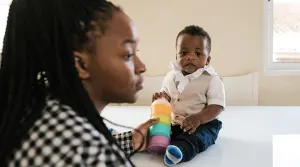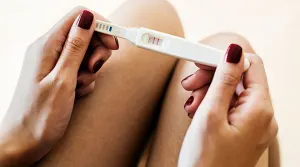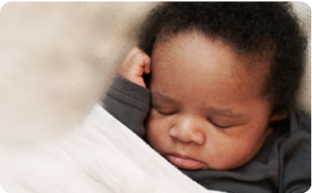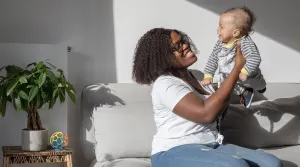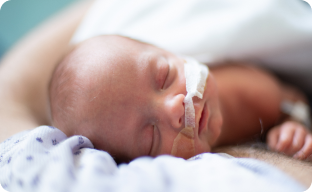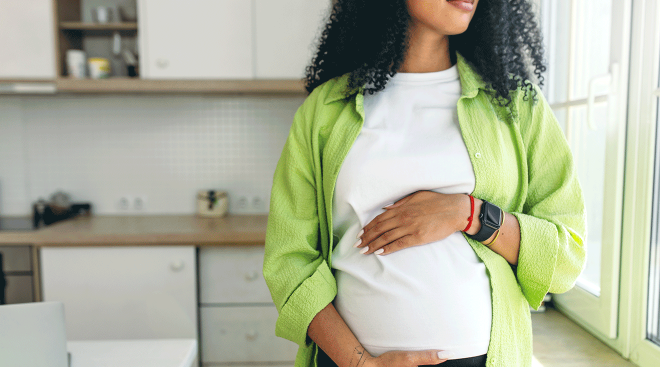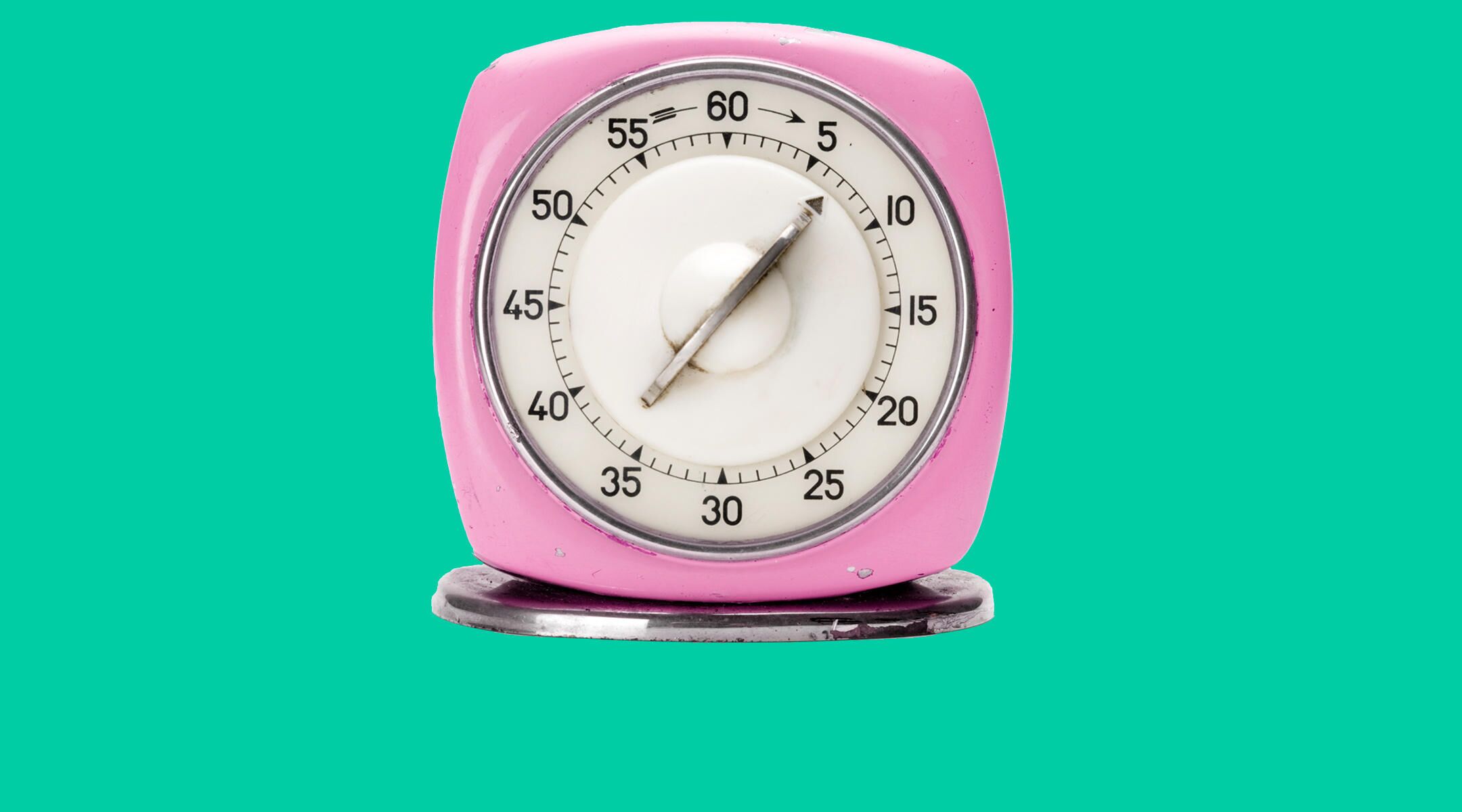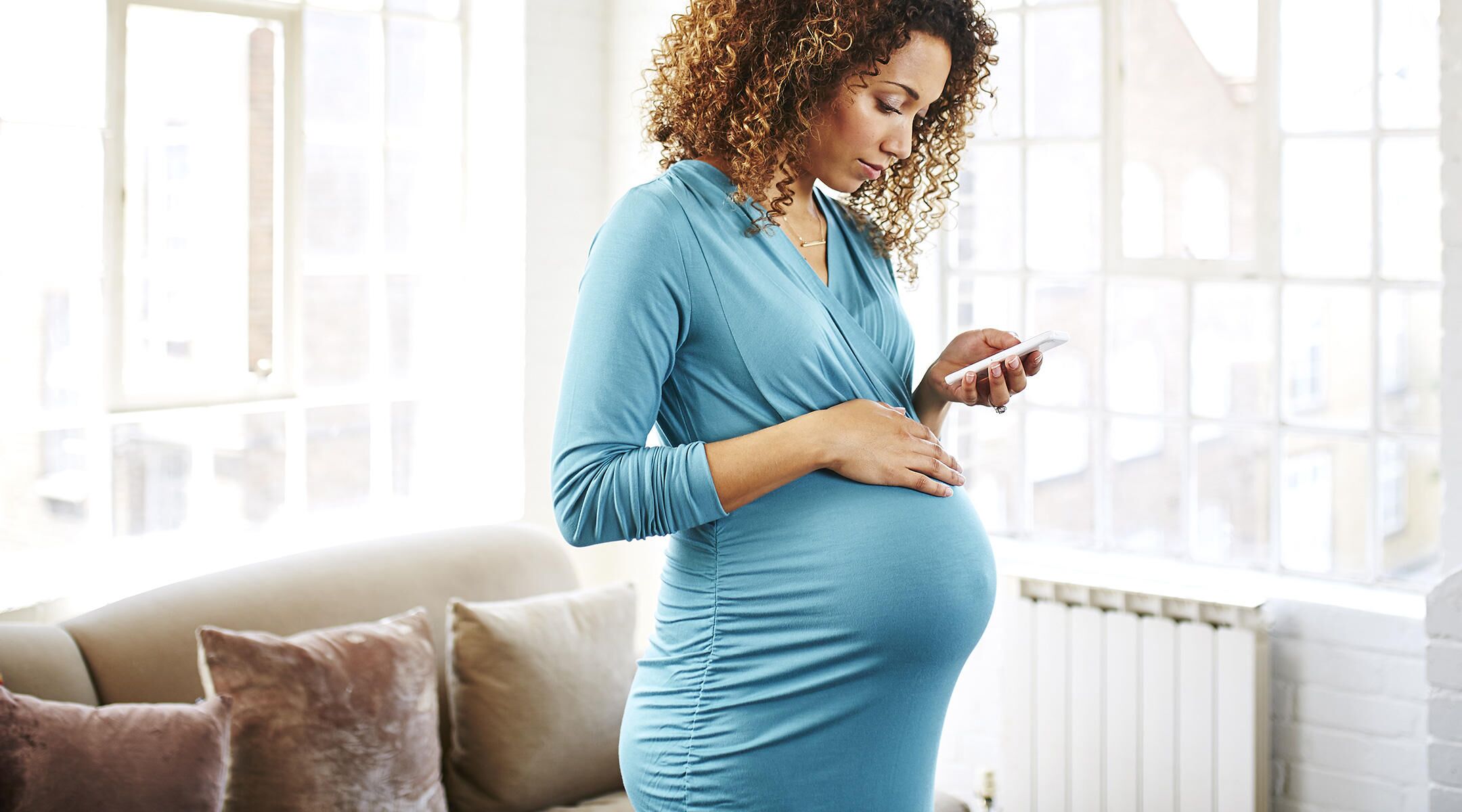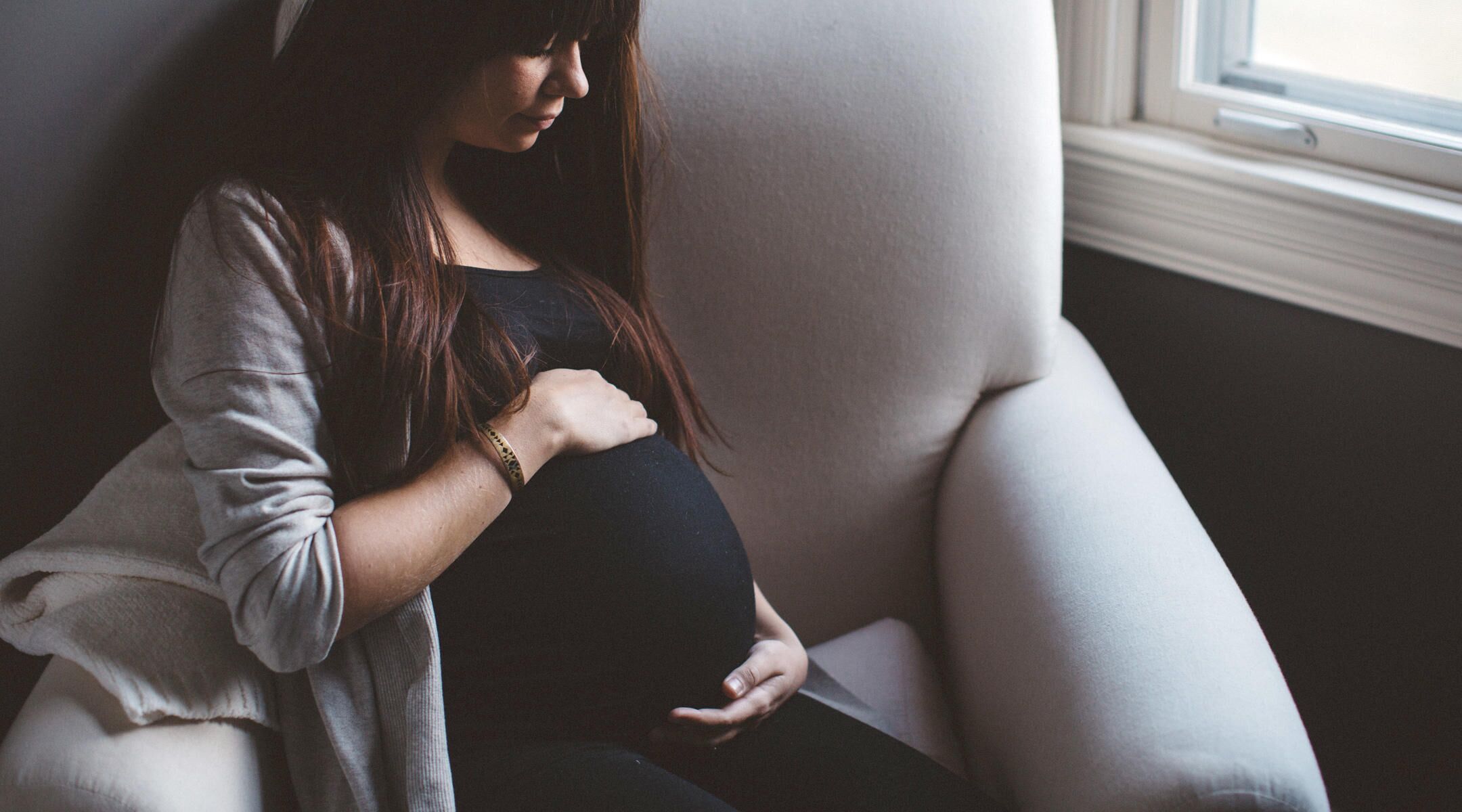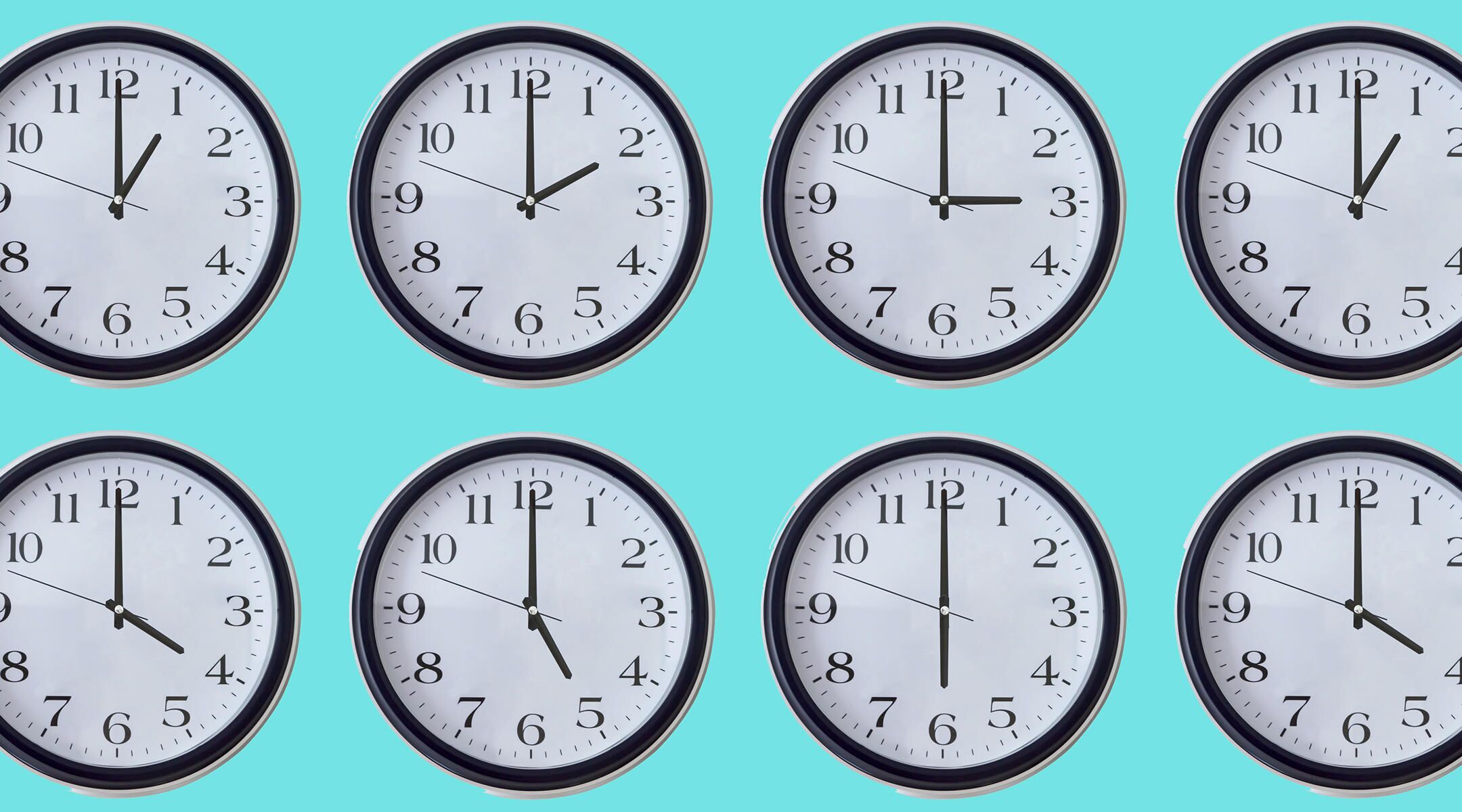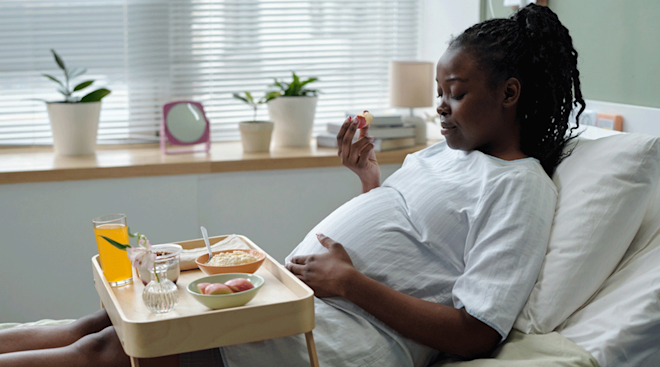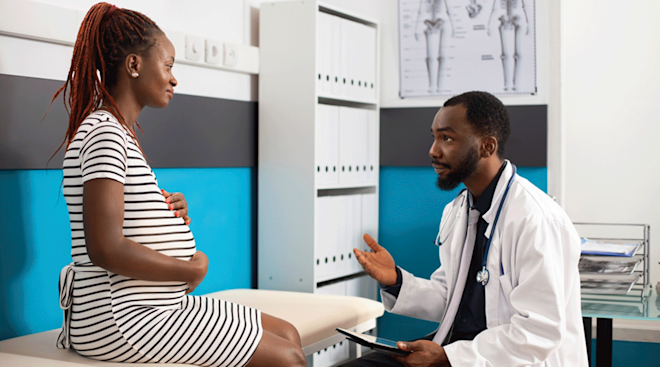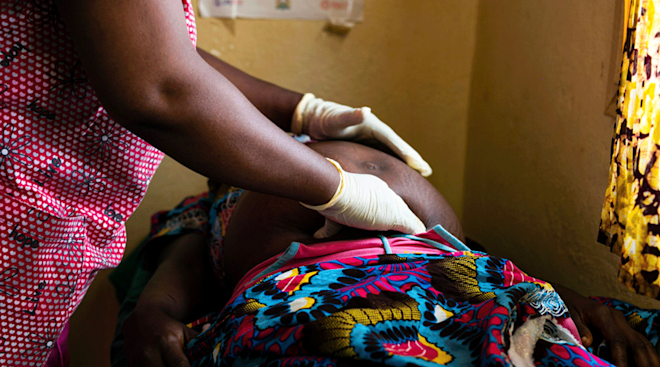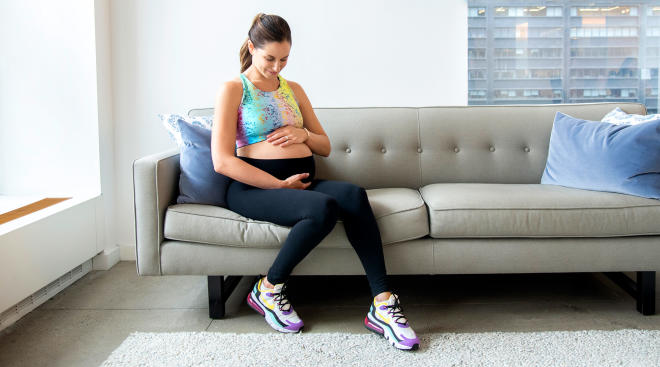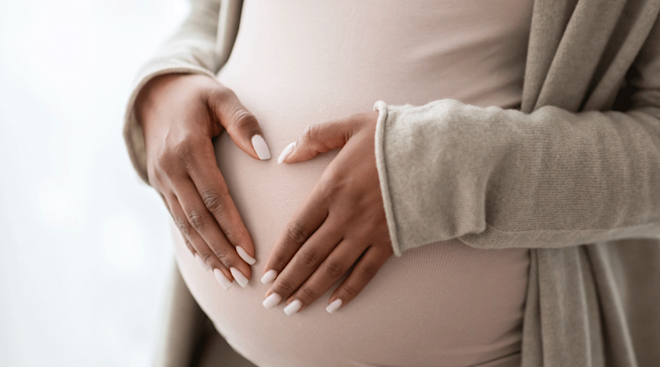What Real Contractions Are Like, According to Moms Who've Felt Them
If you’re in the throes of your first pregnancy, you’ve probably wondered more than once: What do contractions feel like? Will I know them when I feel them? And will I be able to identify that it’s the real deal?
Contractions are what help move things along during labor—although it’s also common to get them in the days and weeks leading up to the grand finale too. And, unfortunately, as most women will tell you, they’re not particularly enjoyable. “I vividly remember shaking the hospital bed railing when an intense contraction would hit. Every few minutes, I’d cause a mini earthquake in my bed,” shares Lauren Barth, a mom of three in New York and associate content director for The Bump. “When my nurse saw me doing this, she asked ‘Do you think you’re ready for your epidural now?’ Turns out, I was already 5 cm dilated—and, yes, I was very much ready for that epidural.”
The uterus is a large muscle, and just like any other muscle in your body, it’ll flex when it’s stimulated, explains Sherry A. Ross, MD, a women’s health expert and author of She-ology: The Definitive Guide to Women’s Intimate Health. Period.. In short, hormonal changes start these contractions—but how you actually experience them depends on your pain threshold and what type of contraction you’re actually having (yep, there’s more than one kind). Ready to get the 411 from experts and real moms who’ve been there, felt that? Below, answers to your burning questions about how contractions feel, when they start and how to know if it’s time to alert your doctor.
- During labor, your uterus will relax and tighten—these are contractions! They help push baby through and out of the birth canal.
- Some women liken contractions to strong period cramps, while others say they’re far more intense.
- Labor contractions will typically start after 37 weeks (unless you’re in preterm labor) and can last anywhere from 30 to 90 seconds, getting more intense and frequent as labor progresses.
- Braxton Hicks contractions (aka false labor) aren’t indicative of true labor—hence their nickname. These can start as early as the second trimester.
There are several different types of contractions, and they’re not all associated with the start of labor. Here are the main ones that should be on your radar:
- Braxton Hicks contractions. These irregular contractions can happen on and off before you’re actually in labor. You may start feeling Braxton Hicks contractions in the second or third trimester. They’re considered practice for the real deal and are sometimes referred to as false labor.
- Preterm contractions. Preterm contractions are those that occur at regular intervals before the 37th week of pregnancy. They also may be associated with cervical changes like effacement (when the cervix thins out) and dilation (when the cervix opens) if a woman is actually in preterm labor.
- Early labor contractions. Also known as latent phase contractions, these are felt at regular intervals in the initial stages of labor.
- Active labor contractions. Typically happening five to seven minutes apart, at most, these contractions are associated with cervical changes.
- Transition contractions. These contractions are the ones most often mimicked on TV. Happening more frequently than active labor contractions, they’re needed to push baby out of the vagina, and they’re the “hardest part of labor,” Ross says.
- Back contractions. Sometimes the positioning of baby or intensity of uterine contractions can cause women to feel painful contractions at regular intervals in their back.
More on all these types of contractions, below!
Contractions can start at varying times for people—and this may differ from pregnancy to pregnancy. While Braxton Hicks contractions may start in the second trimester for some, most women won’t experience true labor contractions until after 37 weeks unless they’re in preterm labor, says Kameelah Phillips, MD, an ob-gyn in New York City. “Exact timing can vary. Some people go into labor spontaneously, while others may be induced or have scheduled births.” Once you do go into labor, the length and frequency of your labor contractions are often determined by the stage of labor you’re in. Labor contractions can last anywhere from 30 to 90 seconds, and their frequency will increase as you get further along and closer to delivery. (More on this below.)
But, really, what does a contraction feel like? (And is it as intense as some people say?) Ask several women this question and you’re likely to get a slew of answers. Labor contraction pain can vary from woman to woman because everyone experiences pain differently, says Jessica Shepherd, MD, an ob-gyn in Dallas, Texas. How long and intense the contractions are, and what phase of labor you’re in can affect your overall perception of the pain too, she adds.
What do contractions feel like during labor?
Wondering more specifically what labor contractions feel like? In early labor, you may feel discomfort or just a squeezing feeling in the abdomen. “When you’re in the early part of labor, contractions are typically more tolerable—usually patients aren’t asking for pain relief, or if they are, it’s not for something super-strong,” says Christine Greves, MD, an ob-gyn at the Winnie Palmer Hospital for Women & Babies in Orlando, Florida.
Active labor contractions, on the other hand, happen when a woman’s cervix is dilating and effacing, and Shepherd describes these as “very intense.” You may find yourself having trouble talking through them. Transitional labor contractions, which happen when baby is actually coming out, are the “most powerful, frequent and painful,” Ross adds.
What do back contractions feel like during labor?
During labor, women may notice lower back pain due to the positioning of baby or the intensity of the uterine contractions, Ross says. Not all women in labor have back contractions, but they can happen—and when they do, they can be forceful and cause severe pain.
What do preterm contractions feel like?
If a woman experiences regular contractions before the 37th week of her pregnancy, they’re considered preterm contractions. They can range from mildly uncomfortable to painful abdominal cramping, Shepherd says. Without seeing a doctor, it can be tough to know whether they’re happening without cervical changes or if they’re causing the cervical changes that can lead to preterm labor. That’s why it’s important to call your ob-gyn if you’re experiencing any regular contractions, even if it’s before your due date. “No one can predict if these early, painful contractions can become more intense or fade away without any medical intervention,” Ross says. “The risk of prematurity is too great not to take an active role in attempting to stop the uterine contractions.”
What do Braxton Hicks contractions feel like?
Braxton Hicks contractions are irregular contractions that aren’t associated with cervical changes, and they can happen anytime in a woman’s pregnancy. “With Braxton Hicks, contractions aren’t as powerful as labor contractions,” Greves says. Some women may experience Braxton Hicks contractions and not even realize it. They don’t occur at regular intervals and often kick in at the end of the day or after a lot of activity. Changing position or walking can sometimes alleviate the pain or stop them entirely.
Becky S., a mom of two, had Braxton Hicks contractions during her second pregnancy. “They were never so bad that I felt like I was in labor,” she says. “The contractions felt like a squeezing and tightening of my stomach…. like little lightning strikes.”
You get it—contraction pain can vary and often feels like intense cramps. But exactly where do you feel contractions? Once again, there’s no definitive answer to this question. “Especially in early labor, it can be hard to pinpoint exactly what’s happening, since the feeling can be vague and sometimes confused with digestion issues or baby movement,” Phillips says. You may feel labor contractions in a variety of places, including your abdomen, back and pelvis.
“Many people describe early contractions as a dull, crampy ache that starts in the lower back and wraps around to the front, similar to strong period cramps,” Phillips adds. Meanwhile, others liken contractions to bowel-movement cramps. For some, the pain can extend through the thighs and down the legs, or can even be felt throughout the entire body. Suffice to say, the pain might be localized or it could be all-encompassing.
Plus, where you feel contractions will likely change as labor progresses and contractions become more frequent and intense. “What starts out as lower belly or back cramping can begin to radiate through the hips, pelvis and even into the thighs,” Phillips notes. “The discomfort typically spreads and deepens, with less relief between contractions, especially during active labor.”
Labor contractions tend to get longer and occur more often as you progress through labor. During early labor, contractions tend to last 30 to 45 seconds and often happen at intervals of about 15 to 20 minutes. The kicker here is that these early labor contractions may last for hours or even days as your cervix thins and begins to dilate. The gap of time between labor contractions will gradually get shorter.
Once you reach active labor (you’re dilated 6 cm), your labor contractions will start picking up in speed and intensity. At this point, they can last for roughly 45 to 60 seconds and happen about every five minutes. If you’re experiencing labor contractions at five-minute intervals for up to an hour, it’s time to call your doctor and probably go to the hospital or your chosen birthing location.
In the transitional labor phase, labor contractions can last up to 90 seconds and happen as often as every one to three minutes. When it’s time to push, your contractions will probably still last about one-and-a-half minutes each, but the time between them may (thankfully!) space out a bit more.
Determining whether you’re in labor can be difficult. It’s confusing—especially if you’ve previously been experiencing strong Braxton Hicks contractions. The following are a few signs that indicate baby’s arrival may not be far off:
- Regular contractions. You’re feeling strong, predictable contractions that increase in frequency over a period of time.
- Baby may drop. Often referred to as “lightening,” this can happen hours or even days before labor, as baby gets into position for delivery.
- Vaginal discharge and bloody show. You may notice an increase in vaginal discharge as your mucus plug loosens. It may be tinted red or brown, a sign that your bloody show has arrived, and baby will likely soon follow.
- Your water breaks. Don’t worry, Hollywood exaggerates. While it’s possible your amniotic sac could rupture spontaneously several hours before contractions even begin, this only happens about 10 percent of the time, per Cleveland Clinic This can happen as a slow trickle or a sudden gush.
Frequently Asked Questions
Do contractions feel like period cramps?
Technically, menstrual cramps are uterine contractions, as they occur to shed the uterine lining, but they’re much more mild than labor contractions. But, again, contraction pain is subjective. There’s no standard or universal norm. However, when describing what contractions feel like, many women do liken them to very strong menstrual cramps. Elaine Q., a mom of two agrees with this assessment: “They just felt like really bad menstrual cramps… It really wasn’t as bad as I expected.” Of course, other women find contractions to be more intense: “It was like an earthquake of pain through my middle, getting stronger and stronger, then relief and prep for ‘aftershocks,’” says Shana L., a mom of three.
The discomfort generally starts as a dull pain and tends to increase in intensity as labor progresses.
How will I know when I am having contractions for real?
“At first, it might be tricky to tell, especially if it’s your first pregnancy,” Phillips says. “Contractions often feel like a tightening or firming of the uterus that comes and goes in waves.” You’ll be able to tell if it’s contractions because they’ll become more regular and intense over time. “A good indicator that labor may be starting is when the sensation doesn’t ease up with rest, hydration or a change in position,” Phillips adds.
Am I having contractions or is baby moving around?
Though sometimes similar, contractions are different from baby kicks or rolls, which are usually felt in one place and are more like “pokes.” Unlike contractions which are typically felt in “waves,” these movements are more usually sharper, quicker and more sporadic, Phillips notes.
How far apart do contractions start?
In early labor, contractions can be irregular and far apart—potentially occurring every 15 to 30 minutes, Phillips says. However, with labor progression, they’ll become more consistent, occurring every 5 to 10 minutes and, eventually, every two to three minutes during active labor.
Do early contractions feel like you need to poop?
They might! As Phillips notes, the pressure of baby moving lower into your pelvis may resemble the feeling of needing to poop. “It’s common to feel rectal pressure or even think you’re just dealing with digestive issues at first. That sensation tends to grow stronger as labor advances, especially when you reach the pushing stage,” she explains.
Can contractions feel like gas pain?
Similarly, contractions can also feel like gas pain. “Early contractions are often mistaken for gas or indigestion,” Phillips says. “They can cause crampy, uncomfortable sensations in your belly that are easy to dismiss as something you ate.” The difference, again, is gas pain will be more random, while contractions will start to follow a predictable pattern.
Can contractions be on one side?
Phillis says labor contractions are usually felt in the abdomen or back, but some may feel them more on one side, particularly during early labor. There are a number of reasons for this, including baby’s positioning and muscle tightness. As the contractions progress, they’ll become more evenly felt.
What is 3/2/1 rule for labor?
The 3/2/1 rule is a guideline some providers use to help pregnant patients gauge when they should head to the hospital. “If your contractions are three minutes apart, for two hours and are lasting at least 1 minute, it probably is time to head in,” explains Liesel Teen, BSN, RN, is a labor and delivery nurse, mom of two and the founder of Mommy Labor Nurse. Some providers may also use the 511 rule, which is when you have contractions every 5 minutes, each lasting at least 1 minute for over 1 hour.
Will I have contractions postpartum?
You may be surprised to learn that you’ll likely experience postpartum contractions; it’s a normal part of the process. These contractions are called “after pains”, and they’re how the uterus returns to its normal size. As Phillips notes, they’re strongest in the first few days after birth, especially during breastfeeding, as the act itself releases oxytocin, which promotes uterine contractions.
Everyone feels and processes pain differently, and your experience with labor contractions may be completely different than that of other women. Phillips sums it up best: “Contractions are a deeply individual experience… The most important thing is to pay attention to what your body is telling you.” If you suspect you’re in labor, contact your doctor—it might just be go time!
Please note: The Bump and the materials and information it contains are not intended to, and do not constitute, medical or other health advice or diagnosis and should not be used as such. You should always consult with a qualified physician or health professional about your specific circumstances.
Plus, more from The Bump:
Christine Greves, MD, is an ob-gyn at the Winnie Palmer Hospital for Women & Babies in Orlando, Florida. She earned her medical degree from the University of South Florida College of Medicine in Tampa, Florida.
Kameelah Phillips, MD, is a board-certified obstetrician and gynecologist, women’s health advocate and founder of Calla Women’s Health. She earned her medical degree from the University of Southern California Keck School of Medicine.
Sherry A. Ross, MD, is a women’s health expert and women’s health expert at Providence Saint John’s Health Center in Santa Monica, California. She is also the author of She-ology: The Definitive Guide to Women’s Intimate Health. Period. and She-ology, the She-quel: Let’s Continue the Conversation. She received her medical degree from New York Medical College in Valhalla, New York.
Jessica Shepherd, MD, is an ob-gyn in Dallas, Texas and the chief medical officer for Hers. She received her medical degree from Ross University School of Medicine in St. Michael, Barbados.
Liesel Teen, BSN, RN, is a labor and delivery nurse, mom of two and the founder of Mommy Labor Nurse. She has over 10 years of experience as a bedside labor and delivery nurse and has helped over 50,000 women complete childbirth education through her birth courses.
Cleveland Clinic, Premature Rupture of Membranes, December 2022
Real Parent Perspectives
- Lauren B.
- Elaine Q.
- Shana L.
Learn how we ensure the accuracy of our content through our editorial and medical review process.
Navigate forward to interact with the calendar and select a date. Press the question mark key to get the keyboard shortcuts for changing dates.











